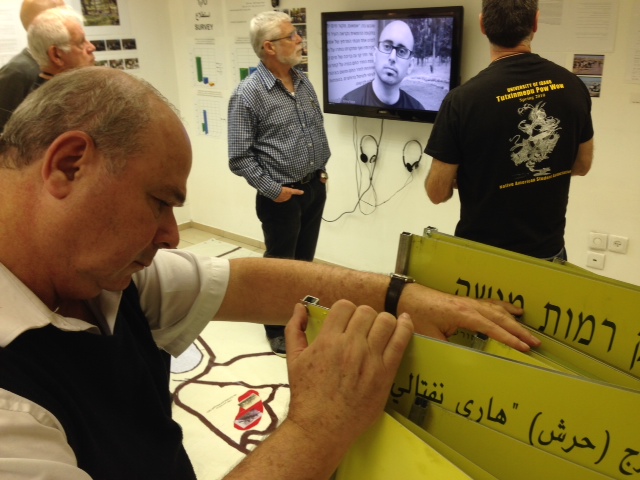Info
District: Haifa
Population 1948: 330
Occupation date: 01/04/1948
Jewish settlements on village/town land before 1948: Dalia
Jewish settlements on village/town land after 1948: Ein HaShofet expansion
Background:
Daliyat al-Rawha' Before 1948
Placed on a small hill between two shallow wadis that ran north to south at 24.5 km distance from Haifa, Daliyat al-Rawha' was linked by a secondary road to a highway that descended southwest towards the Mediterranean, and led northeast to the plain of Marj ibn 'Amir. The area extending from Daliyat al-Rawha' (the 'fragrant vine) to the village of Umm al-Fahm to the east was called the bilad al-rawha' (the 'fragrant country'). In the late nineteenth century, the authors of the Survey of Western Palestine wrote that the village was situated on the west side of a watershed with a good spring on the south. Daliyat al-Rawha' had a rectangular outline that extended from east to west, its houses were made of stone with either mud or cement mortar, and were clustered together. The residents were Muslims, practicing agriculture and animal husbandry as main economic activities, and they drew water from the many springs in the area. There was a khirba (ruin) to the northwest of the village.
Occupation, Depopulation, and Israeli Settlements
The inhabitants of Daliyat al-Rawha', living as tenant farmers, were expelled from the village as early as February 1948, as the lands belonging to Daliyat al-Rawha' had already been bought by Zionist organizations before 1948. At the beginning of the year, discussions had already begun within the Zionist establishment regarding what should be done with the communities.
Yosef Weitz, a JNF director, held a meeting of officials in January to decide the fate of Daliyat al-Rawha and another village. He later wrote in his diary: 'Is it not now the time to be rid of them? Why continue to keep in our midst these thorns at a time when they pose a danger to us? Our people are weighing up [solutions].' According to historian Benny Morris, in February Weitz used his contacts with local Haganah units and Haganah intelligence officers to have tenants evicted from several villages, among which Daliyat al-Rawha'.
Although the villagers may have been expelled in February, New York Times stated that the village was only occupied on the 14 April, during the battle around the settlement of Mishmar ha-'Emeq which managed to seize ten villages in an arc south of the settlement. Morris also stated that in the same month, JNF official Weitz met with top Haganah commanders, who promised to provide manpower and equipment to help set up a settlement on the village site. However, the village was destroyed before a settlement was established. Israeli prime minister Ben-Gurion further wrote in his diary in mid-June 1948 that the destruction of the village was complete, most probably on the basis of a progress report from Weitz.
The settlement of Daliyya, built in 1939, is south of the village site on land that originally belonged to the village. Moreover, the settlement of Ramot Menashe was established on 31 July 1948 close to Daliyat al-Rawha', some five months after the eviction of its population, and three and a half months after its occupation, on lands that belong to the village of Sabbarin.
The Village Today
One can still see the stone rubble of houses, covered with dirt, bushes, and thorny shrubs. A large portion of the site is covered by clusters of cactus, while a few olive, chinaberry, and poplar trees are scattered about. At the southern edge there's a large eucalyptus tree, and a few meters to the north stones are strewn among the cactus plants - most likely the remains of the village cemetery. At the southern edge of the site, in the wadi (valley), are the walls of a house with stone floors.
------------------------------
Source: al-Khalidi, Walid (ed.). All that remains: the Palestinian villages occupied and depopulated by Israel in 1948. Washington DC: 1992.


